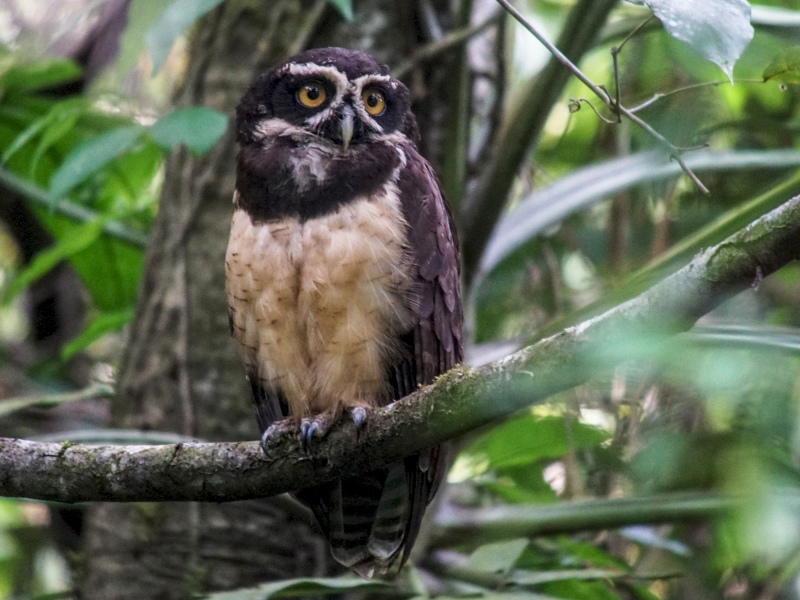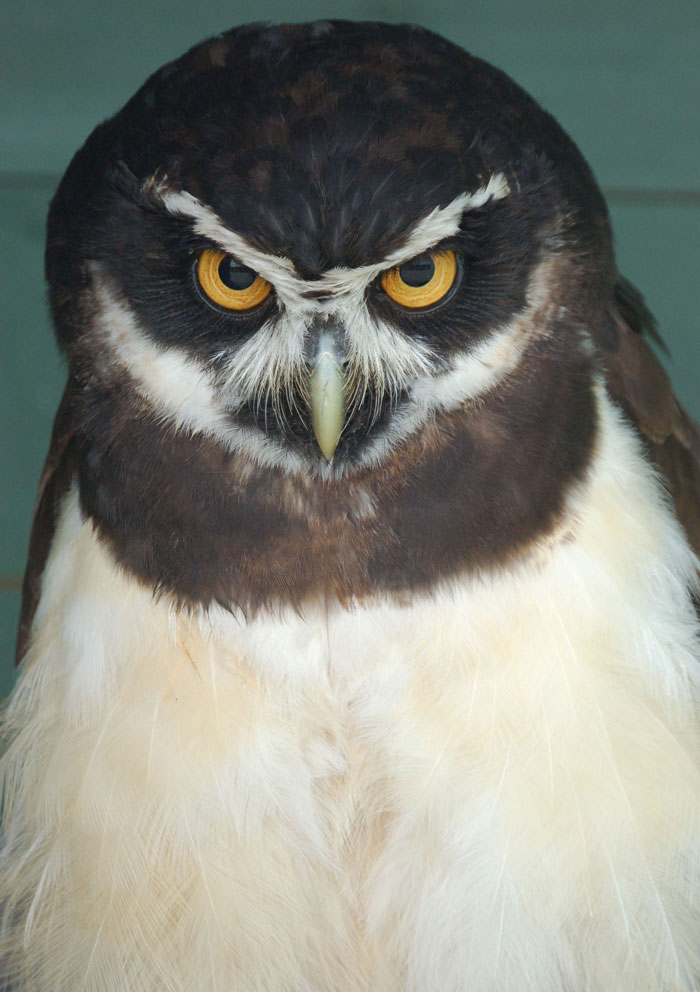The spectacled owl
The spectacled owl (Pulsatrix perspicillata) is a big neotropical bird. It breeds as a resident in woods ranging from southern Mexico and Trinidad to Central America, and south to southern Brazil, Paraguay, and northwestern Argentina. This species is primarily nocturnal, beginning activity around the time of last light at dusk and returning to their roosts around the first light. It is a solitary, unsocial bird that roosts alone each day and only associates with others of its own species for reproductive purposes.
The spectacled owl is the most common and dominant owl in its region, with the larger great-horned owl (Bubo virginianus) very infrequently entering real rainforest settings. The owl usually begins hunting by perching on a branch and examining the area, then dropping with a rapid pounce when prey is found. It mostly preys on mammals, consuming nearly everything that is active at night. Although various rodents are primary, practically every tiny mammal in their habitat is vulnerable.
The Peters climbing rat was by far the most common food in Oaxaca, Mexico, followed by unidentifiable mice opossums. Numerous bats, including bigger spear-nosed bats and broad-eared bats, appear to be susceptible. Tamarins, for example, are small and vulnerable to predation. Prey species can weigh more than 1.5 kg (3.3 lb), with Didelphis opossums, Mephitis skunks, and agoutis weighing up to 2 to 4 kg (4.4 to 8.8 lb) (Dasyprocta ssp.). Even the three-toed sloth (Bradypus variegatus) has been reported to have been killed, notably, an adult female weighing 3.5 to 4.5 kg (7.7 to 9.9 lb), or more than four times the owl's weight. Invertebrates are eaten on a regular basis, second only to mammals, and may consist primarily of caterpillars, but also crabs, snails, huge insects, and spiders.











